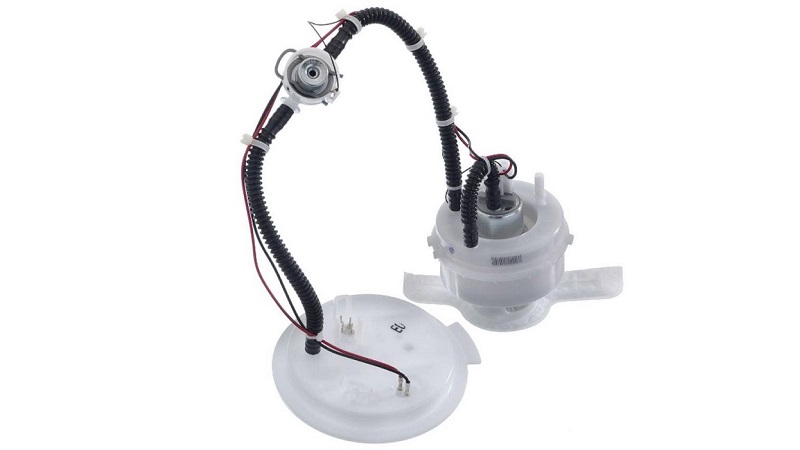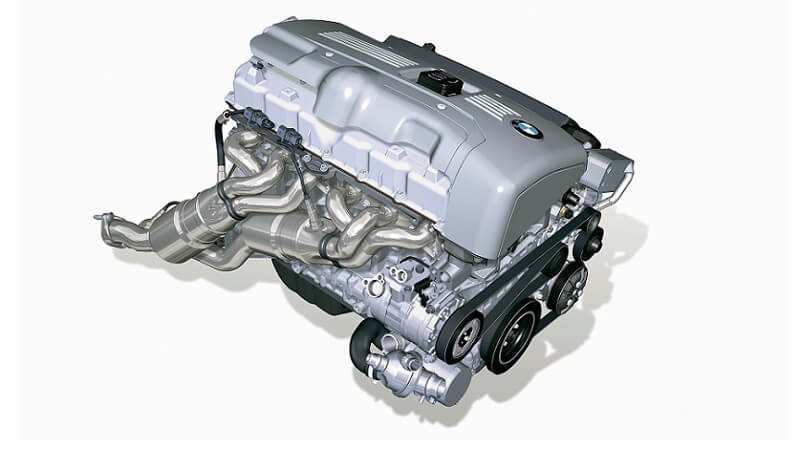If you’ve ever seen the “Check Engine” light come on in your BMW, you know how important it is to pay attention to these fault codes. They provide valuable clues about your car’s health and can help prevent more severe problems down the road.
In this article, we’ll be discussing the 29E0 BMW code, aiming to explain its meaning and help you understand its potential implications. Fault codes play a crucial role in diagnosing vehicle issues, and the 29E0 code is no exception. We’ll explore the specifics of the 29E0 code, its possible causes, and the best ways to address it effectively. By the end of this article, you’ll be better equipped to handle the 29E0 code and keep your BMW running smoothly. Let’s get started!
Overview of 29E0 BMW Code
The 29E0 BMW code is one of the fault codes that can appear on your BMW’s OBD-II scanner, specifically related to the powertrain. When this code is triggered, it indicates an issue with the fuel mixture in one of the engine’s cylinders. In more technical terms, the code signifies a “Fuel Mixture Control, Mixture Too Lean” condition.
Possible Causes of the 29E0 Code
Several factors can trigger the 29E0 BMW code, and it is essential to diagnose the root cause accurately to perform the appropriate repairs. Some common causes include:
- Faulty Oxygen (O2) Sensor — A malfunctioning O2 sensor can inaccurately detect the air-to-fuel ratio, leading to an imbalanced mixture.
- Vacuum Leaks — Leaks in the intake manifold or vacuum lines can introduce excess air into the engine, affecting the fuel mixture.
- Dirty or Clogged Fuel Injectors — Impurities or blockages in the fuel injectors can disrupt the precise delivery of fuel.
- Fuel Pump Issues — A failing or inadequate fuel pump can supply insufficient fuel to maintain the proper mixture.
- Mass Airflow Sensor (MAF) Malfunction — The MAF sensor measures the amount of air entering the engine and plays a crucial role in fuel delivery.
Effects on Performance and Emissions
When the 29E0 code is present, you may experience reduced engine performance, such as a loss of power, rough idling, or hesitation during acceleration. Additionally, the vehicle’s emissions may exceed allowable limits, leading to environmental concerns.
Diagnostic Process for the 29E0 Code
Diagnosing the 29E0 BMW code requires a systematic approach to pinpoint the exact cause of the fuel mixture imbalance. Properly identifying the underlying issue is crucial to implementing the correct repairs and restoring your BMW’s performance. Below are the steps involved in the diagnostic process:+
Step 1: Retrieve the 29E0 Code
Using an DME/OBD-II scanner, connect it to the vehicle’s diagnostic port (usually located under the dashboard) and retrieve the stored fault code. Take note of the specific code “29E0” and any other accompanying codes.
Step 2: Freeze Frame Data Analysis
Access the freeze-frame data associated with the 29E0 code. This data provides vital information about the vehicle’s operating conditions at the moment the fault code was triggered. Pay close attention to parameters such as engine RPM, coolant temperature, intake air temperature, and throttle position.
Step 3: Visual Inspection
Perform a visual inspection of the engine bay and related components. Look for signs of damaged or disconnected vacuum hoses, leaks around the intake manifold, and any visible wiring issues. Address any evident problems before proceeding further.
Step 4: Check Oxygen (O2) Sensor Functionality
The O2 sensor(s) play a crucial role in monitoring the air-to-fuel ratio in the exhaust gases. Test the functionality of the O2 sensor(s) using a scan tool or multimeter. Replace any faulty sensor(s) if necessary.
Step 5: Inspect the Mass Airflow Sensor (MAF)
The Mass Airflow Sensor measures the amount of air entering the engine and provides essential data for fuel delivery. Inspect the MAF sensor for dirt, debris, or damage. Clean or replace the MAF sensor as needed.
Step 6: Check for Vacuum Leaks
Use a smoke tester or propane enrichment method to detect vacuum leaks in the intake system. Address any leaks found, as they can lead to an imbalanced fuel mixture.
Step 7: Examine the Fuel Injectors
Inspect the fuel injectors for clogs or signs of malfunction. Consider performing a fuel injector cleaning procedure or replacing faulty injectors if required.
Step 8: Fuel Pump Inspection
Test the fuel pump’s pressure and volume output to ensure it delivers an adequate amount of fuel to the engine. Replace the fuel pump if it fails to meet the specified requirements.
Step 9: Software Updates
In some cases, the 29E0 code may be triggered due to outdated engine control module (ECM/DME) software. Check for available software updates from BMW and perform the necessary updates if applicable.
Step 10: Clearing the Code
After addressing the identified issues, clear the fault codes using the OBD-II scanner. This step resets the Check Engine light. Take your BMW for a test drive to verify if the issue has been resolved.
Remember, diagnosing and repairing the 29E0 code can be complex, and it’s essential to have a good understanding of automotive systems or seek professional assistance if needed. By following the diagnostic process diligently, you can pave the way for a smoother and more efficient driving experience in your BMW.
Solutions and Repairs for the 29E0 Code

Having identified the potential causes of the 29E0 BMW code through the diagnostic process, it’s time to take action and implement the necessary solutions. Depending on the specific issue causing the code, various repair strategies can be employed to rectify the problem and restore your BMW’s optimal performance. Let’s explore the possible solutions for each potential trigger:
- Oxygen (O2) Sensor Replacement — If the O2 sensor is found to be faulty or providing inaccurate readings, consider replacing the affected sensor. Ensure you use genuine BMW parts or high-quality aftermarket sensors to maintain reliable performance.
- Vacuum Leak Remediation — If vacuum leaks are detected during the visual inspection or smoke testing, address them promptly. Replace damaged or worn vacuum lines and gaskets, ensuring a secure and airtight seal.
- Mass Airflow Sensor (MAF) Cleaning or Replacement — If the MAF sensor is dirty or malfunctioning, clean it with specialized MAF cleaner according to manufacturer instructions. If cleaning does not resolve the issue, consider replacing the MAF sensor with a new one.
- Fuel Injector Cleaning or Replacement — For clogged or malfunctioning fuel injectors, perform a professional fuel injector cleaning service. If the injectors cannot be adequately cleaned, replace them with new or reconditioned ones.
- Fuel Pump Replacement — If the fuel pump is not providing the required pressure or volume, it is crucial to replace it with a compatible and high-quality fuel pump to ensure proper fuel delivery.
- Software Updates — Check for any available ECM software updates from BMW that may address known issues related to the 29E0 code. Perform the updates as recommended by the manufacturer.
- Preventive Measures and Staying Informed — As a responsible BMW owner, proactive maintenance and staying informed about your vehicle’s diagnostic codes are essential to keep your prized automobile running smoothly. Preventive measures can significantly reduce the likelihood of encountering the 29E0 code and other potential issues. Here are some valuable tips to consider:
- Regular Maintenance — Adhere to BMW’s recommended maintenance schedule for timely oil changes, air filter replacements, spark plug checks, and other essential services. Inspect and replace worn belts, hoses, and other components as needed to prevent unexpected failures that could lead to fault codes.
Quality Fuel and Fluids
Always use high-quality fuel that meets BMW’s specifications. Poor fuel quality can lead to engine performance issues and trigger fault codes. Use BMW-approved fluids for engine, transmission, brake, and other systems to ensure optimal performance and longevity.
Driving Habits
Avoid aggressive driving and excessive idling, as they can contribute to increased wear and strain on engine components. Warm up your BMW’s engine before driving in cold weather to allow the oil to circulate and lubricate critical parts properly.
Fix the 29E0 BMW Code with Quality Parts
In conclusion, the enigmatic 29E0 BMW code can be deciphered with a thoughtful and systematic approach to diagnostics. Understanding the specifics of this code, its potential causes, and implementing the appropriate repairs are key to restoring your BMW’s optimal performance.
Here at Bimmers.com, we have all the parts you need to fix the 29E0 BMW code. Check out our catalog and find a wide range of quality parts for your vehicle!






